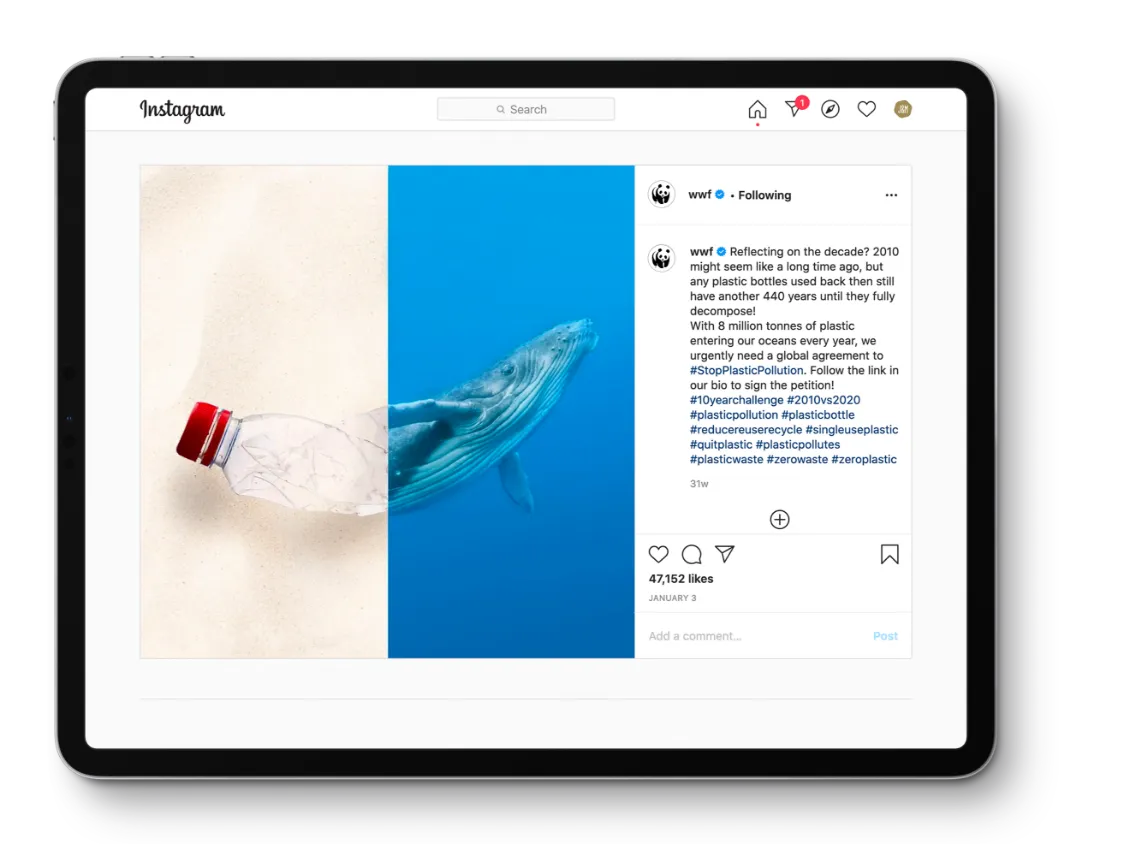SOCIAL MEDIA GUIDELINES
© Raphael Nogueira / Unsplash
How to develop relevant and impactful social media communications that support our vital goals.
© WWF / Simon Rawles
Our mission is to stop the degradation of the planet’s natural environment and to build a future in which people live in harmony with nature. To achieve this, we must engage individual citizens, indigenous and local community groups, NGOs, international media, global corporations, governments and more. We work across different mediums to reach as many people as possible – one of which is social media.
When reaching out to our 30 million+ followers across our social channels, our goal is to engage, inform and drive action.
WHO IS WWF’S AUDIENCE ON SOCIAL MEDIA?
We have two key target audiences, which we call Audience A and Audience B.
Audience A are ‘lean forward’ active nature lovers who may already support WWF causes or another nature, wildlife or conservation NGO.
Audience B are people who have a narrower interest in nature. For example, they may be keen hikers or surfers, who interact with and value nature as part of their leisure interest. Or they might be dedicated eco-shoppers, who understand the impacts, positive and negative, of their buying habits. They are not, however, activists or active supporters of WWF causes or other nature organizations.
While we greatly value Audience A, as an NGO dedicated to delivering impact, much of our efforts must be targeted at Audience B – they are a much larger group than Audience A and, if we can mobilize them, they can greatly increase our influence and subsequently, our collective impact.
When creating content always keep Audience B Think about what would interest an audience that doesn’t already support our causes. What passions, interests and ‘ways in’ are there for people who don’t identify as nature or climate activists, but who are nevertheless interested in nature and aware it must be protected.
CONTENT STRATEGY RECOMMENDATIONS
CONTENT PILLARS
Where possible and depending on your local circumstances and priorities, we recommend splitting content evenly across our six global practices and three drivers – Climate & Energy, Food, Forests, Freshwater, Oceans, Wildlife, Finance, Market and Governance.
Although it may be tempting in some markets to rely on the Wildlife pillar to create emotional content for social media, we must ‘be true to the work we do’ and make sure we do not omit other parts of what we do as an organization. We are, after all, both a people and nature organization.
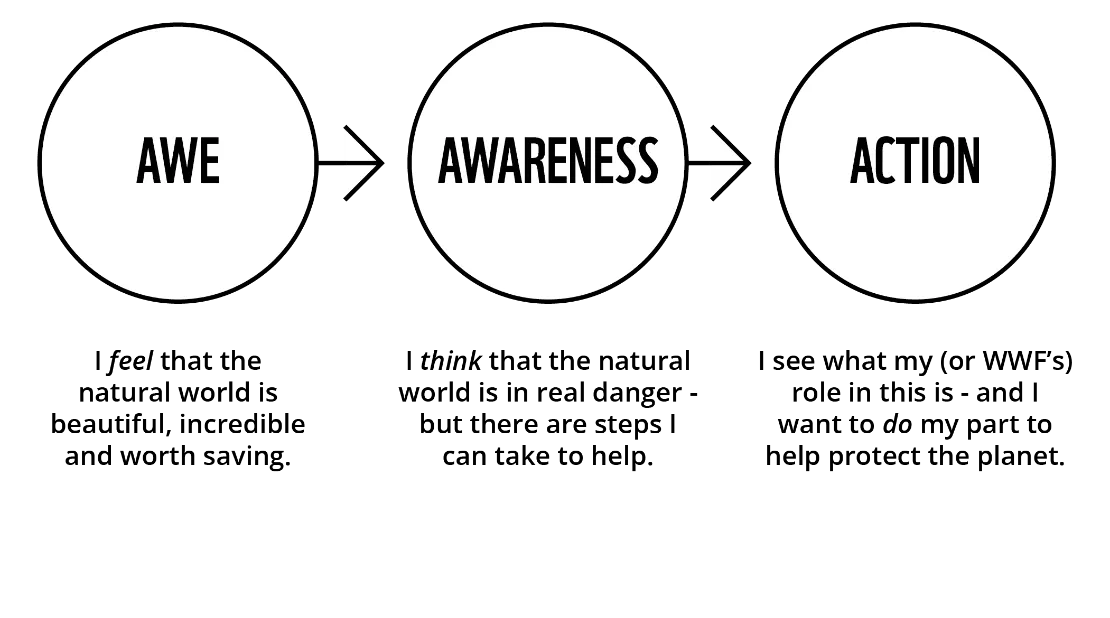
CONTENT STRUCTURE RECOMMENDATION
Particularly for larger campaigns and content pieces, we recommend the ‘Awe, Awareness, Action’ approach.
This involves taking users on a journey from being awestruck by the beauty and preciousness of the world we live in, to awareness of what threatens both people and nature, and then finally on to educate them on ways they can take action.
Each individual element – awe, awareness and action – is important but, when applied separately, they can only take the user so far. Put the three together and we have a triple whammy effect – taking users on a journey from caring about nature to doing something about it and making them understand that biodiversity, nature and human well-being are all linked.
It’s particularly important that when we highlight issues and challenges that we show what the solutions are and provide actions for people to take – our audiences are not then left feeling powerless about the state of the natural world and our own role in it.
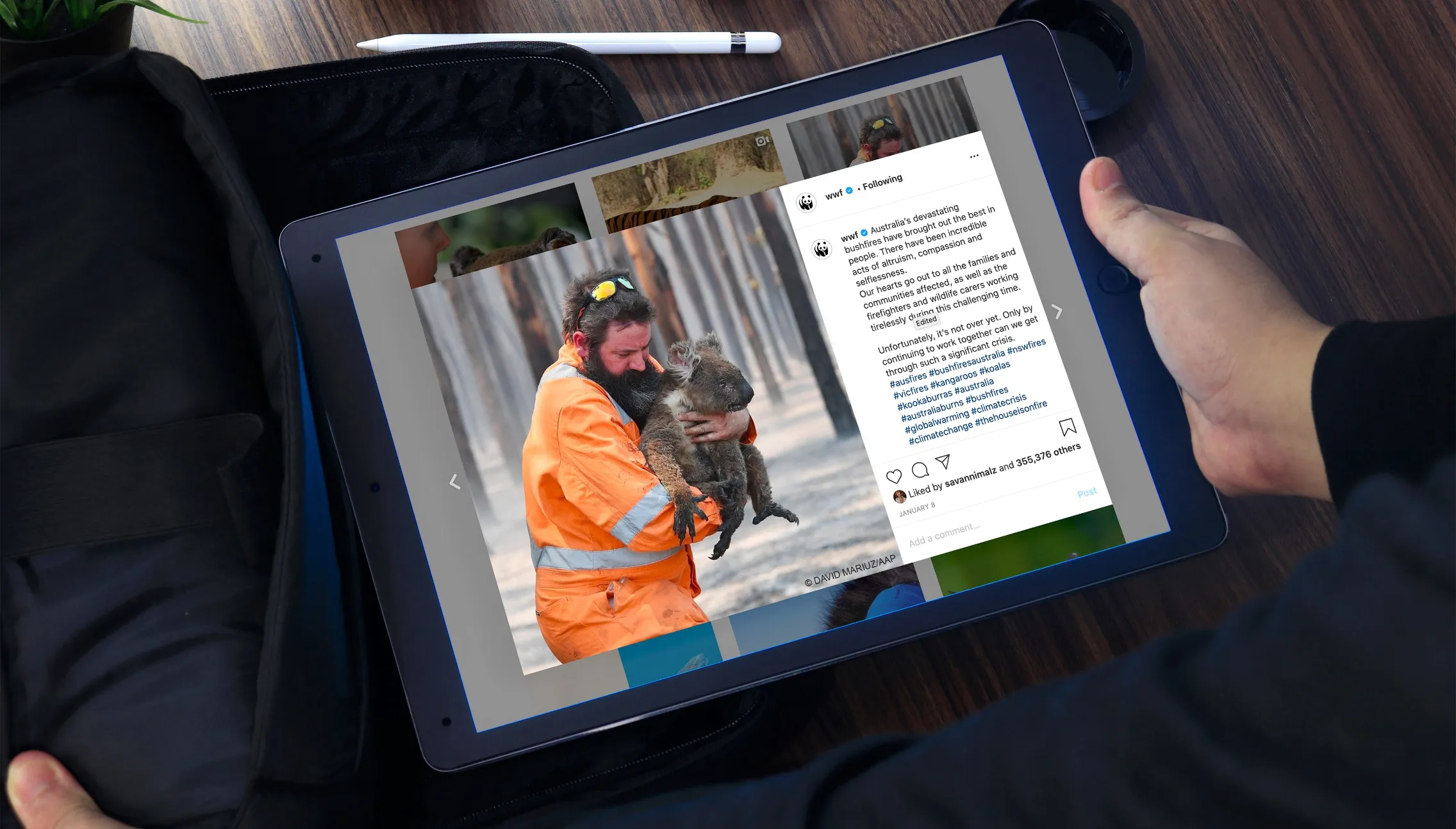
WWF International on Instagram chooses visually arresting images, which spark an emotional connection with the viewer. When relevant, choose images which feature people as well as nature. See our photography & video guidelines for more information.
SOCIAL MEDIA KEY PRINCIPLES
Our social media principles provide firm foundations upon which you can build exciting, creative communications. They set out that content should always be true to our work, high-quality and relevant, aligned whenever possible with relevant entities, and instantly recognizable as being WWF-branded. These principles are not meant to be constraints – they are intended to be helpful parameters within which you can spark creativity, push boundaries, learn what your local audience responds to and identify what trends may support your work, in order to create the best content possible.
Creating consistent content, which aligns to who we are globally, what we do, and our visual guidelines including tone of voice and visual style, means that we’re boosting awareness and recognition, as well as preventing audiences from losing interest in our mission – and unsubscribing.

© WWF-Singapore
RELEVANT TO THE AUDIENCE
Every piece of content we put out needs to be high quality and relevant: performance of our platforms depends on social media algorithms, which are based on engagements and recent interactions. So ensuring that our content sparks valuable feedback amongst our audience means our content will be pushed into more feeds as a high priority and we will have greater access to new audiences.
ALIGNED WITHIN A RELEVANT ENTITY
Even though the content may need to be changed to suit the needs of different platforms and audiences, make sure your platforms feel they are part of the same ‘family’ within a particular entity (e.g. country, practice or initiative).
INSTANTLY RECOGNIZABLE AS WWF
Beyond being recognizable as part of a particular entity, our platforms should also feel part of the WWF global network. After all, every piece of content contributes to WWF’s global goals. And with no frontiers in the online world, audiences are becoming increasingly globalized, quickly learning what to expect from an organization in terms of content, regardless of where it’s been generated. They sign up to follow our social accounts based on this expectation.
WWF SOCIAL MEDIA GUIDELINES
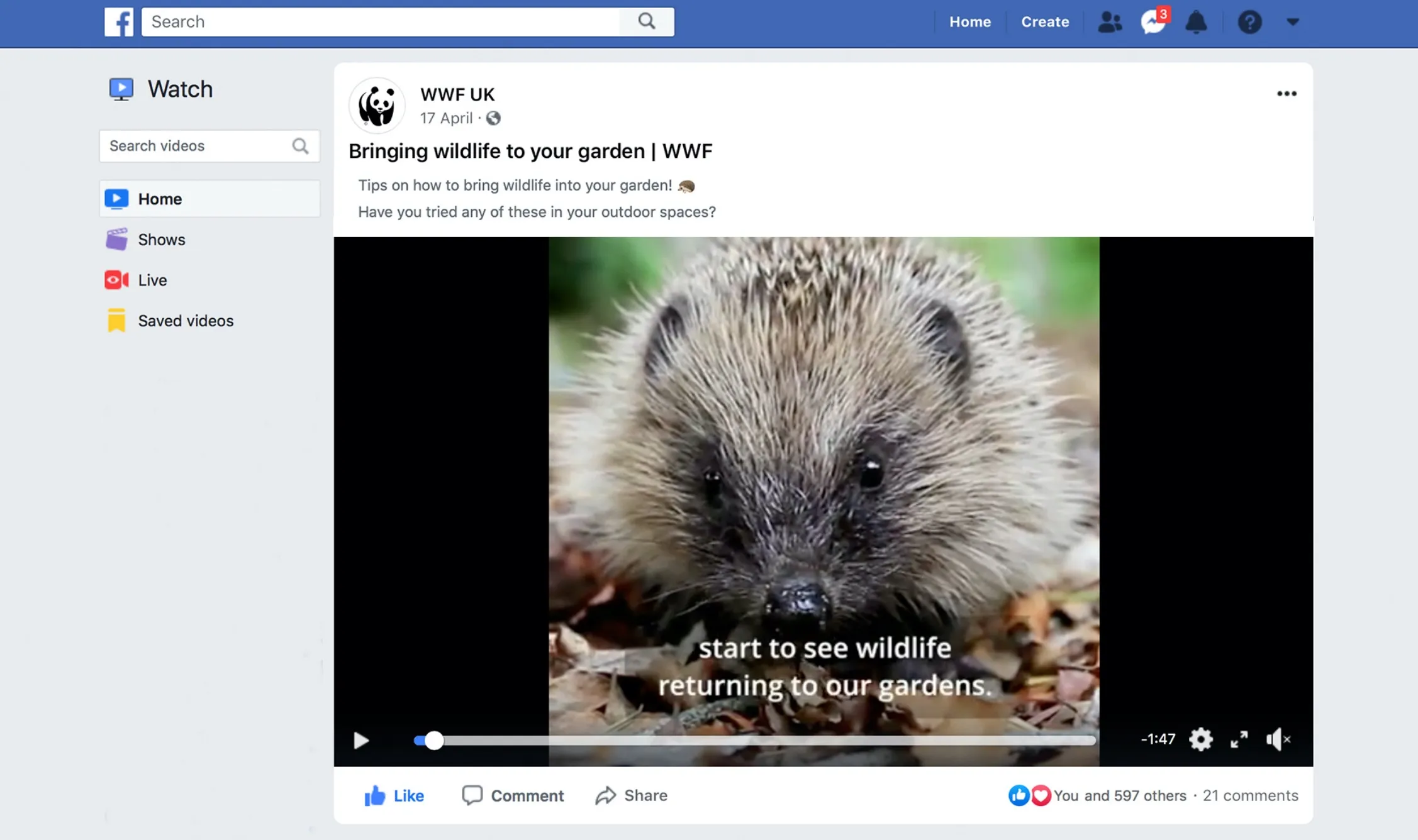
On Facebook, WWF-UK asks a question to engage the audience, keeps copy short and includes emojis and uses high-quality video with subtitles. All recipes for success.
Consistency builds trust. And this is even more true for social media – a fast-paced environment where content changes every day.
This is why we ask that social media platforms follow our brand guidelines when publishing content that is being shared globally by WWF teams across many countries.This includes flagship international publications (e.g. WWF International Annual review, Living Planet Report) and key updates on globally important issues.
We recommend that localized content also follows our brand guidelines although recognize that more flexibility may be required.
WWF-Indonesia is using interactive poll formats on Twitter along with trending hashtags to tie into current conversations.
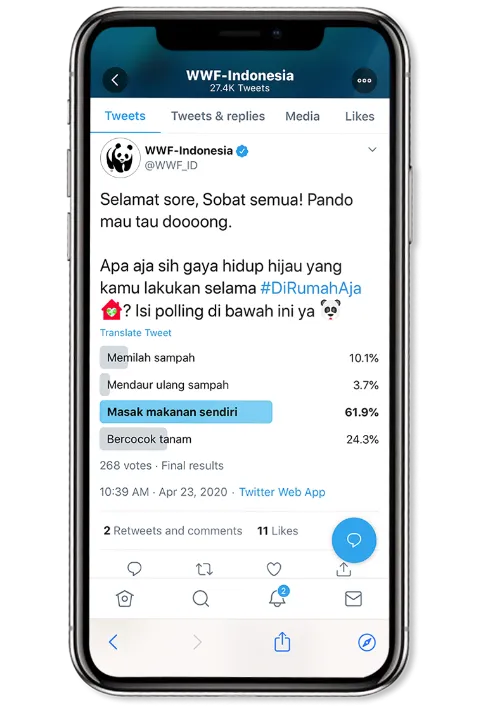
FOR FURTHER INFORMATION
REFERENCE DOCUMENTS
Consult WWF social media management guidelines for more information on content creation and profile elements recommendations, together with tips to build a social community and raise awareness.
Consult WWF social media policies for community management, including best practice recommendations for responding to your followers as well as recommended processes for crisis management.
GUIDELINES
For photo and video usage, visit our photography and video guidelines page.
For writing content, use our tone of voice guidelines where you can also access detailed advice on issues ranging from how to express WWF names and titles to our approaches to grammar and punctuation.
Also, visit our typography, colour palette, and logo pages for more information on our core visual identity.
